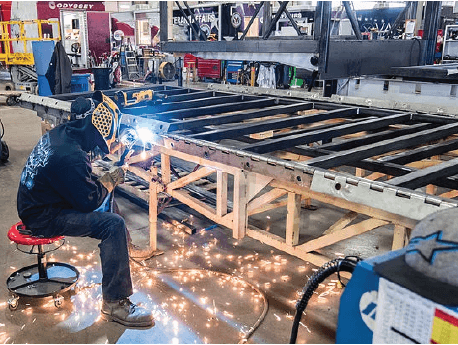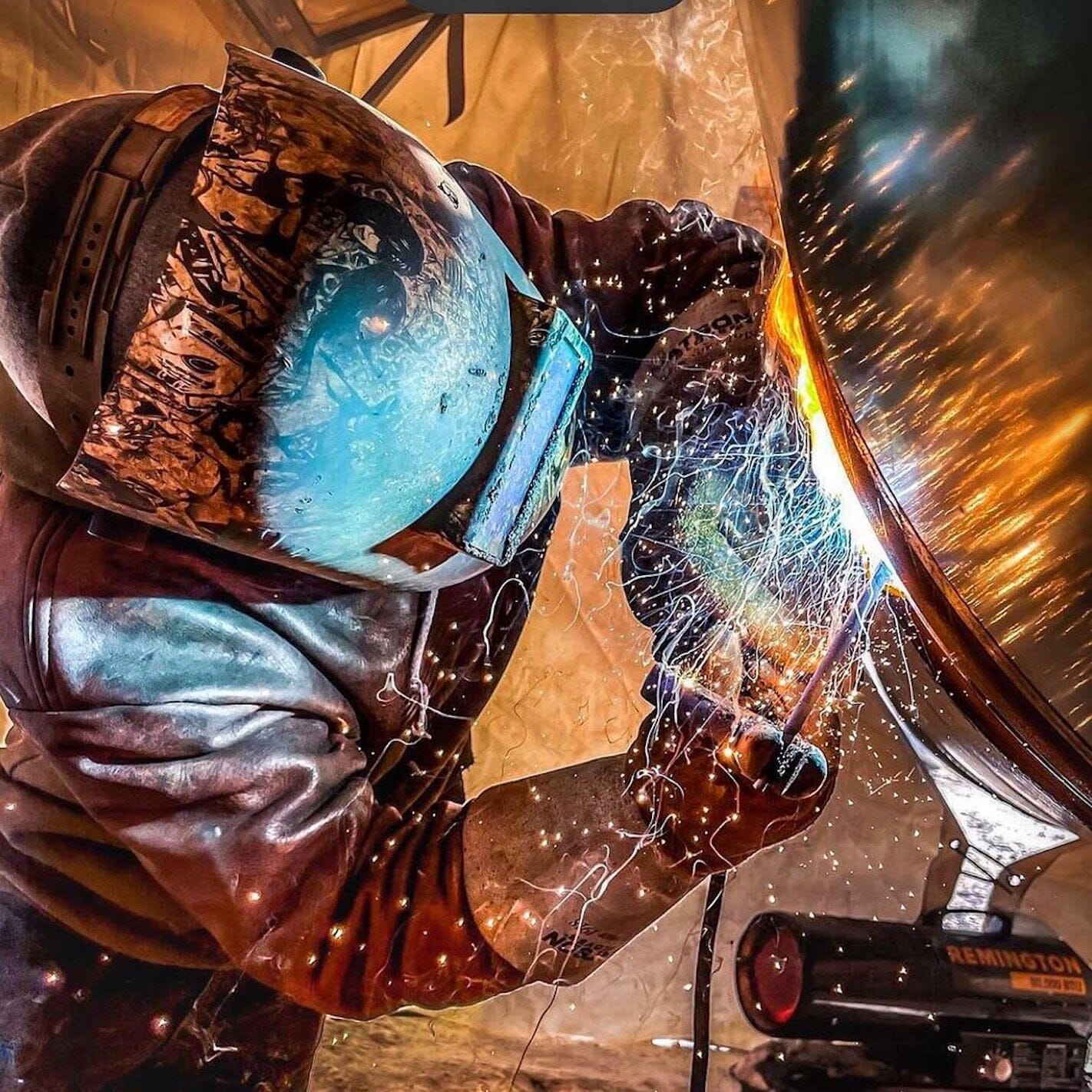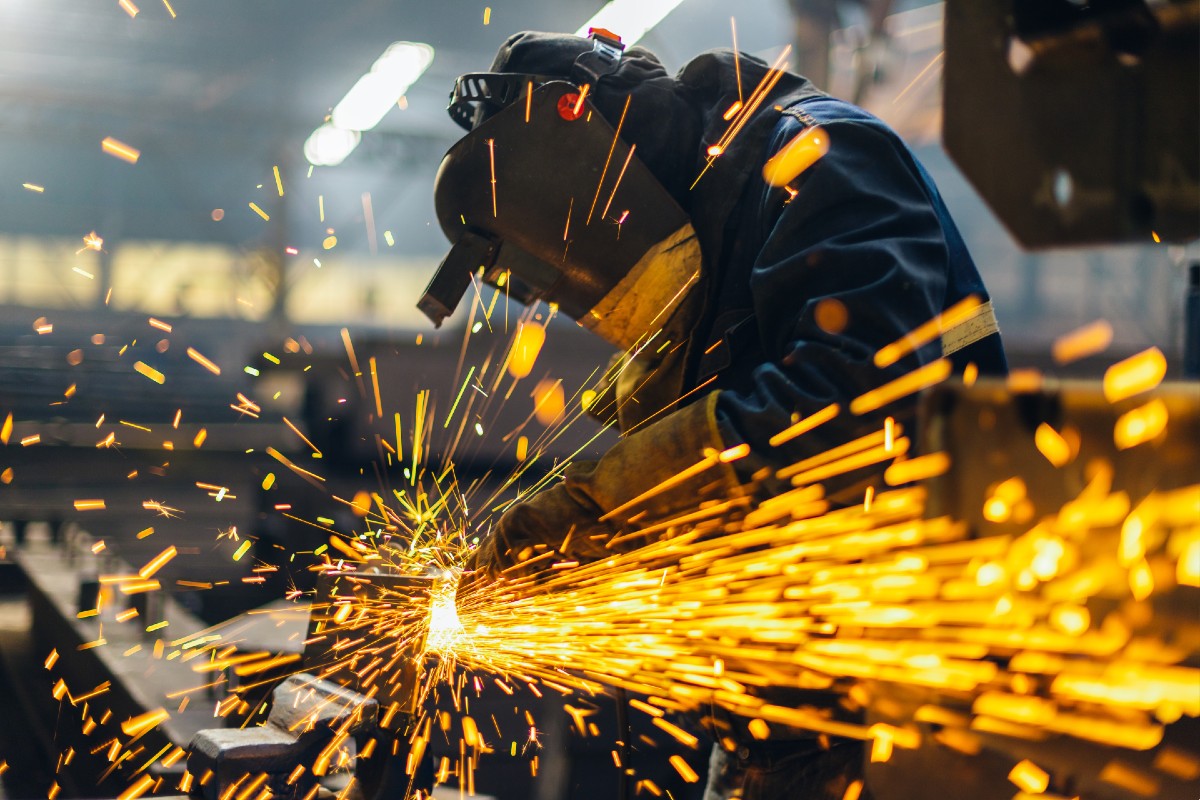Steps for perfect fusion with Montana Mobile Welding and Repair Belgrade Fabrication
Wiki Article
Typical Welding Repair Issues and How to Address Them Efficiently
Welding repairs frequently run into a variety of issues that can jeopardize the stability of the end product. Common problems consist of inadequate penetration, porosity, and imbalance, to name a few. Each defect presents distinct obstacles that need details methods for resolution. Recognizing these problems is essential for welders intending to enhance their abilities and results. This conversation will explore these common welding repair service issues and effective approaches to address them.Inadequate Infiltration
Inadequate penetration happens when the weld metal fails to completely fuse with the base product, causing weak joints and prospective architectural failings. This problem often originates from insufficient warm input, incorrect electrode angle, or incorrect welding speed. Welders may experience poor penetration as a result of a miscalculation of the essential criteria for a certain product density or kind. Furthermore, contamination on the base product's surface area can hinder effective bonding, aggravating the trouble. To attend to inadequate infiltration, welders need to guarantee proper setups on their equipment and preserve a clean job surface. Routine examination of welds is advised to determine any kind of deficiencies early, permitting timely corrections and the prevention of compromised architectural stability in welded assemblies.Porosity
Porosity is a common flaw in bonded joints that shows up as little gas bubbles caught within the weld steel. This problem can jeopardize the integrity of the weld, resulting in decreased strength and possible failing under stress and anxiety. Montana Mobile Welding and Repair Belgrade. Porosity normally occurs from contamination, wetness, or improper welding strategies, which permit gases to leave into the molten weld pool. To deal with porosity, welders need to ensure appropriate surface area prep work, preserve a tidy functioning atmosphere, and use suitable welding criteria. Furthermore, picking the right filler material and securing gas can alleviate gas entrapment. Regular examination and screening of welds can assist identify porosity early, ensuring prompt restorative activities are taken, therefore maintaining the top quality and integrity of the welded structureImbalance
Misalignment in welding can occur from different aspects, including improper setup and thermal development. Understanding the source is crucial for effective resolution. Several adjustment techniques are readily available to straighten elements and ensure structural honesty.Reasons of Misalignment
Welding imbalance often comes from a selection of underlying issues that can compromise structural honesty. One main reason is inappropriate fit-up of components prior to welding, which can lead to spaces and irregular surfaces. Variations in thermal development during the welding procedure can additionally result in distortion, particularly if the products being joined have different coefficients of development. In addition, insufficient securing and fixturing might fail to hold parts firmly in position, leading to movement during welding. Improperly conserved tools, consisting of welding makers and devices, might present disparities in the weld grain, further adding to imbalance. Operator error, stemming from insufficient training or experience, can additionally play a substantial duty in developing misaligned welds.
Improvement Techniques Readily Available
Addressing imbalance successfully needs a combination of rehabilitative methods customized to the certain issues handy. One common technique is the usage of jigs or components to hold elements in the proper placement throughout welding, guaranteeing constant alignment. Furthermore, preheating the products can aid lower distortion and improve fit-up. For considerable imbalance, mechanical adjustment methods, such as utilizing hydraulic jacks or clamps, can be utilized to deal with the position prior to welding. Post-weld warmth therapy might additionally be needed to alleviate anxieties triggered by misalignment. Mindful examination and modification throughout the setup phase can avoid imbalance problems from ending up being significant problems, advertising a smoother welding procedure and enhancing total architectural integrity.Distortion
Distortion is a common challenge in welding that can arise from numerous aspects, including irregular cooling and heating. Recognizing the reasons of distortion is essential for applying reliable avoidance techniques. Addressing this concern not only enhances structural honesty yet likewise enhances the general top quality of the weld.Reasons of Distortion
When subjected to the extreme heat of welding, products typically go through adjustments that can bring about distortion. This phenomenon mainly occurs from thermal development and contraction during the welding process. As the weld area warms up, the product broadens; upon cooling, it gets, which can develop inner anxieties. On top of that, uneven home heating throughout a work surface can aggravate these tensions, resulting in warping or flexing. The kind of product additionally plays a substantial role; steels with differing thermal conductivity and coefficients of expansion may respond in different ways, resulting in unpredictable distortions. Additionally, bad joint design and poor fixturing can add to imbalance throughout welding, enhancing the chance of distortion. Comprehending these causes is crucial for efficient welding repair and avoidance approaches.Avoidance Techniques
Effective prevention strategies for distortion during welding concentrate on controlling warm input and making sure appropriate joint design. Preserving a regular warm input aids to minimize thermal development and tightening, which can cause distortion. Making use of techniques such as preheating the work surface can additionally lower the temperature slope, promoting consistent heating. Furthermore, choosing proper joint designs, such as T-joints or lap joints, can improve stability and minimize tension focus. Executing correct fixturing to secure the workpieces in position better help in preserving positioning throughout the welding procedure. Ultimately, staggered welding series can distribute heat a lot more equally, preventing localized distortion. By using these approaches, more info welders can significantly reduce the likelihood of distortion and enhance the total quality of their welds.Splitting
Splitting is a typical issue run into in welding repairs, commonly resulting from numerous elements such as inappropriate air conditioning rates, material option, or poor joint prep work. The occurrence of fractures can significantly compromise the stability of the weld, resulting in possible failures throughout operation. To resolve this problem, welders must first examine the source, guaranteeing that products work and suitably picked for the details application. Additionally, managing the air conditioning rate during the welding procedure is essential; fast cooling can cause stress and lead to breaking. Proper joint design and prep work also add to decreasing the threat. Carrying out these approaches can improve weld top quality and durability, ultimately reducing the possibility of breaking in finished weldments.
Insufficient Fusion
A substantial problem in welding repairs is insufficient fusion, which happens when the weld steel does not adequately bond with the base material or previous weld passes - Montana Mobile Welding and Repair Belgrade. This problem can lead to weaknesses in the joint, possibly endangering the honesty of the bonded framework. Variables adding to incomplete combination include not enough warm input, inappropriate welding strategy, and contamination of the surface areas being signed up with. To resolve this issue properly, welders need to ensure appropriate pre-weld cleansing and surface area prep work, along with change their welding specifications to attain adequate penetration and fusion. Normal examination during the welding process can additionally aid identify incomplete blend early, permitting prompt restorative steps to enhance the total top quality of the weldOverheating
While welding repair services can enhance architectural honesty, overheating presents a substantial obstacle that can bring about material degradation. Extreme heat during welding can modify the mechanical residential or commercial properties of metals, leading to reduced toughness, enhanced brittleness, and warping. This phenomenon is specifically essential in high-stress applications where architectural integrity is vital. Identifying overheating can include visual inspections for discoloration or distortion, in addition to keeping an eye on temperature throughout the welding process. To reduce the threats related to overheating, welders ought to use appropriate techniques, such as controlling warmth input, readjusting travel rate, and using suitable filler products. Furthermore, carrying out pre- and post-weld warmth therapies can aid bring back material properties and boost the overall top quality of the fixing, guaranteeing lasting efficiency and safety and security.Often Asked Questions
What Are the Usual Indications of a Welding Problem?

Just How Can I Test My Welds for Top quality?
To test welds for top quality, one can utilize visual assessments, ultrasonic testing, and radiographic methods. Each strategy assures architectural integrity, determines problems, and verifies adherence to defined standards, ultimately enhancing the reliability of the bonded joints.What Safety Safety Measures Should I Take While Welding?
When welding, one must focus on safety by putting on ideal personal protective devices, making certain appropriate ventilation, safeguarding combustible materials away, preserving a tidy workspace, and understanding environments to stop crashes and injuries.Can I Fix a Weld Without Renovating the Entire Joint?
Fixing a weld without renovating the whole joint is feasible, depending on the damage (Montana Mobile Welding and Repair Belgrade Fabrication). Strategies such as grinding, including filler product, or utilizing a welding procedure can effectively attend to specific problems while preserving the bordering structureWhat Tools Are Vital for Efficient Welding Repair Works?
Crucial devices for effective welding repairs include a welding device, cable brush, grinder, protective gear, clamps, and filler materials. Each device plays a vital role in making sure top quality and safety and security throughout the repair service procedure. Porosity usually emerges from contamination, dampness, or inappropriate welding methods, which allow gases to leave right into the molten weld pool. Inadequately kept tools, including welding equipments and tools, might introduce disparities in the weld bead, additional contributing to imbalance. When subjected to the intense warmth of welding, materials typically go through adjustments that can lead to distortion. Splitting is a common concern run into in welding repairs, usually resulting from numerous factors such as incorrect air conditioning prices, product option, or inadequate joint preparation. A considerable problem in welding repair work is incomplete combination, which happens when the weld steel does not properly bond with the base material or previous weld passes.Report this wiki page